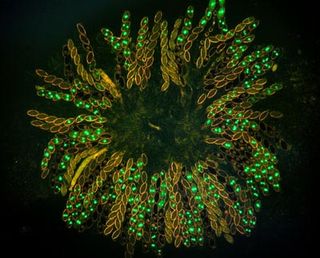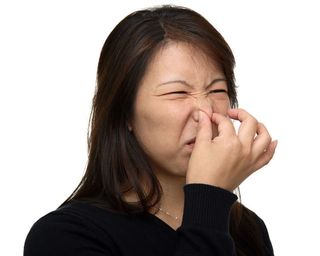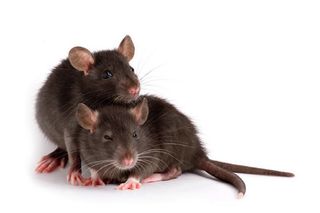5 Foul Things That Are Good For You
Yuck!

Usually, we think of mold, feces, nitric oxide, hydrogen sulfide and rat poison as rank, toxic or both. But scientists funded by the National Institutes of Health are learning more about the helpful roles these substances can play.
Learn more:
This Inside Life Science article was provided to LiveScience in cooperation with the National Institute of General Medical Sciences, part of the National Institutes of Health.
Bread Mold

If you're a homeowner, mold is definitely a four-letter word. But to scientists, it's a very important organism. The widely used antibiotic penicillin comes from a mold called Penicillium. This mold's bacteria-killing ability was discovered accidentally by Alexander Fleming in 1928 when it drifted in from another lab, landed on Fleming's petri dish and killed the bacteria on it.
Today, Neurosporacrassa — the mold that turns your sandwich bread green — is helping scientists answer questions about how species arise and adapt as well as how cells and tissues change their shapes in different environments. And because it produces spores on a 24-hour cycle, this bread mold is also useful for identifying the molecular timepieces that govern sleep, wakefulness and other rhythms of life.
Feces

Our guts are host to many bacteria, and researchers are analyzing the bacterial colonies in our poop to better understand what they do. Specifically, scientists involved in the NIH-led Human Microbiome Project are using genomic tools to identify these communities in the gut and other hotspots — the nose, mouth, skin and vagina — to learn how they help maintain health or set the stage for disease.
In one study investigating the role of the gut's microorganisms in obesity, researchers obtained stool samples from pairs of female twins who were either both obese or both lean, as well as from their mothers. They found that each individual carries a unique collection of bacteria, but that the communities are more similar among family members. This information will contribute to a rapidly increasing body of knowledge about how microbes influence our physiology and how we might manipulate them to increase their benefit to us.
Nitric Oxide

Nitric oxide is a toxic pollutant that we most often smell in car exhaust fumes, but it is critical to our cardiovascular health, brain function and immune system. It transmits signals in most living creatures to help dilate arteries, activate nerve cells and increase the number of white blood cells to kill invading bacteria and parasites. Interestingly, Tibetans living at high elevations — where there's less oxygen in the air — have much more nitric oxide in their blood than do people living closer to sea level. Scientists believe that this extra nitric oxide dilates the Tibetans' blood vessels, increasing blood flow to ensure that sufficient oxygen gets to their tissues. The discovery of nitric oxide's role in the body, particularly the cardiovascular system, netted a Nobel Prize in 1998.
Hydrogen Sulfide

We generally associate hydrogen sulfide with the smell of rotting sewage. But some of our body's cells produce small quantities of this gas, and research indicates that this happens when their protein-making factories start churning out bad products. The stinky gas seems to help cells slow down protein production or, if the situation is bad enough, stop production and commit suicide. Because hydrogen sulfide helps enable a proper response, it may play a role in understanding and ultimately preventing diseases linked to excess cellular suicide, such as Alzheimer's and Parkinson's.
Rat Poison

Warfarin, one of the world's most prescribed medicines, stems from a substance on spoiled sweet clover that caused cattle to mysteriously bleed to death in the 1920s. Shortly afterward, researchers identified the natural anticoagulant chemical. Derivatives were first marketed as rat poisons and later as a new class of drugs, which includes warfarin.
Two million Americans start taking warfarin each year to prevent dangerous blood clots that can lead to heart attacks, strokes or even death. They may also take it after major surgery to avoid other clotting problems. But prescribing the right dose is tricky, because some people need stronger doses and others need weaker ones. For this reason, the drug is currently the focus of basic and clinical studies to better understand how a person's genetic makeup can affect his or her response to medicine.
Sign up for the Live Science daily newsletter now
Get the world’s most fascinating discoveries delivered straight to your inbox.
